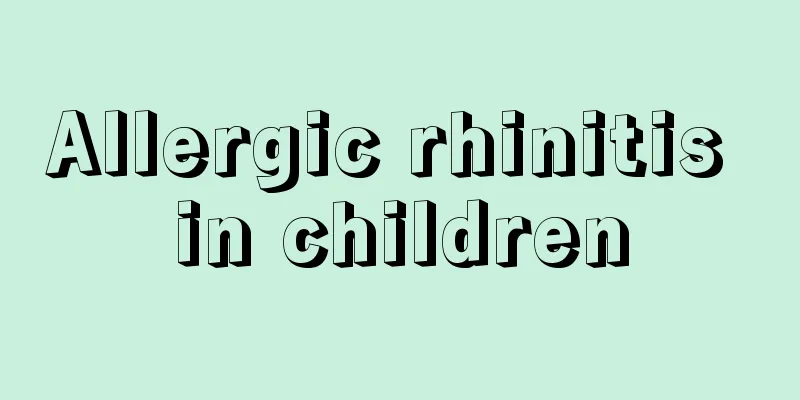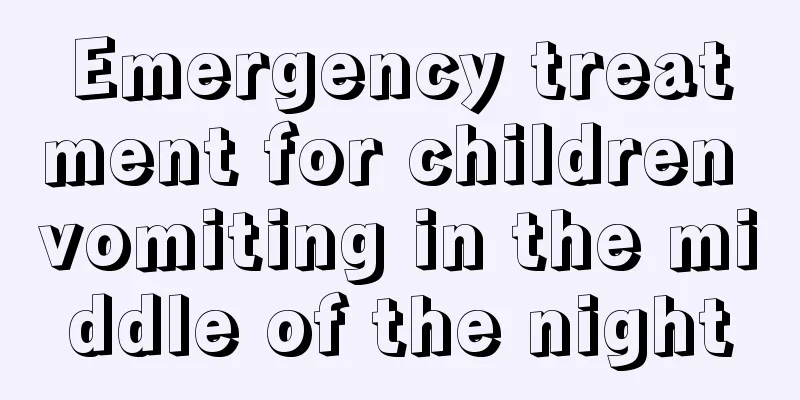Allergic rhinitis in children

|
With the continuous improvement of urbanization level, we can see that more and more people choose to live in big cities. This is mainly because the living environment and employment prospects in first- or second-tier cities are much better than in rural areas. But we don't blindly think that cities are better than rural areas. Generally speaking, children living in cities have weaker resistance than children in rural areas due to lack of exercise and polluted living environment. Children in cities have weaker resistance than children in rural areas, which is mainly reflected in the higher incidence of certain diseases, mainly allergic diseases, respiratory infections, etc. Among these diseases, the most common allergic disease is allergic rhinitis. Next, let’s take a look at the general situation of allergic rhinitis. Causes of Disease 1. Heredity and constitution: According to statistics, the incidence rate is as high as 75% when both parents suffer from allergic diseases, and sometimes the incidence rate can be as high as 50% when only one parent suffers from allergic diseases. Therefore, genetic factors play a very important role. 2. Environment: The cause of seasonal attacks of allergic rhinitis also lies in the stimulation of allergens in the environment, such as pollen, indoor house dust mites, dust mites, animal dander and feathers, which are all allergens that cause allergic rhinitis. As the level of air pollution increases, babies who originally did not have allergic constitutions may develop allergic constitutions because their immune functions have not yet been fully formed, which will cause a lot of troubles to the babies and accelerate the occurrence of allergic inflammatory reactions in babies. 3. Diet: There are some allergens in the diet that irritate the nasal mucosa and cause allergic rhinitis in babies, but mothers need to pay attention to these allergic substances in daily life. Different babies have different dietary taboos. Milk, eggs, fish, shrimp, meat, fruits, and even certain vegetables may become allergens. 4. Disease: Allergic rhinitis is often accompanied by cold attacks, which sometimes directly lead to the onset of allergic rhinitis in babies. In addition, antibiotics and other medicines used by babies in some diseases can also indirectly cause the onset of allergic rhinitis in babies. Treatment 1. Avoid contact with allergens During the susceptible season, outdoor activities should be limited as much as possible, especially avoiding contact with flowers, plants or rotten leaves, as well as willow catkins and fruit hairs on plane trees. You can wear a mask when going out, or go to the seaside where there are fewer allergens. During the pollen season, do not dry quilts and sheets outdoors to prevent outdoor allergens such as pollen from sticking to the quilt. 2, 2. Drug treatment They mainly include antihistamines, nasal corticosteroids, anti-leukotriene drugs, chromone drugs, decongestants, nasal saline irrigation, etc. Nowadays, local preparations are also used to directly apply drugs to the nasal cavity, which can enable high concentrations of drugs to effectively reach the target tissues. It has a rapid onset of action, few adverse reactions and is easy to operate. Children cooperate well and the effect is obvious. Therefore, local treatment is becoming more and more commonly used. 3. Specific immunotherapy In the past, it was also called desensitization or hyposensitization therapy. It is a method of giving patients gradually increasing doses of allergen extracts (allergen vaccines) to reach a certain dose, thereby effectively improving the corresponding symptoms caused by exposure to the allergen. It is mainly suitable for allergic rhinitis in children over 5 years old who are not responsive to conventional drug treatment and are mainly caused by dust mite allergy. The diagnosis is clear, the number of other allergens is small, and the child's parents understand the risks and limitations of treatment. The above are the causes and treatments of allergic rhinitis in children. From the above we can see that, in fact, the occurrence of allergic rhinitis in children, apart from genetic factors, is closely related to our daily life. Therefore, in daily life, children should actively participate in physical exercise and eat more fruits and vegetables to enhance their own resistance. |
<<: 7 kinds of food that babies should not eat on an empty stomach
>>: What to do if children have trouble sleeping
Recommend
What are the causes of sleepiness in children?
In a family with children, everything about the c...
What should I do if my child has red bumps on his body that itch when scratched?
In the hot and humid summer, children may develop...
How to increase children's appetite
What parents worry about most is their children. ...
What should I do if my child likes to get angry?
Educating children is a big issue, and there are ...
Causes of peeling hands and feet in children
Peeling of the hands and feet in children is a ve...
How to treat children with cold, fever and convulsions
Many mothers have found that their children will ...
Treatment for blue spots around baby's eyes
We may know that there are many reasons for the b...
Children's cough syrup
When the seasons change, coughs, colds, fevers an...
Is it normal for a baby to start teething at 4 months old?
We know that babies usually grow teeth at 6 month...
What is the cause of abscesses on children's gums?
Nowadays, many parents do not pay attention to th...
Which department should children with hernia go to?
Most young people are first-time parents, so when...
What is the reason for the child's bloody stool?
Children's immune system is relatively weaker...
What are the clinical manifestations of children with cerebral palsy?
Every parent hopes that their children can grow u...
Causes of fever in children in summer
Many people may say that the temperature is relat...
Why does a 100-day-old baby drool?
Babies will drool when they are very young. Many ...









